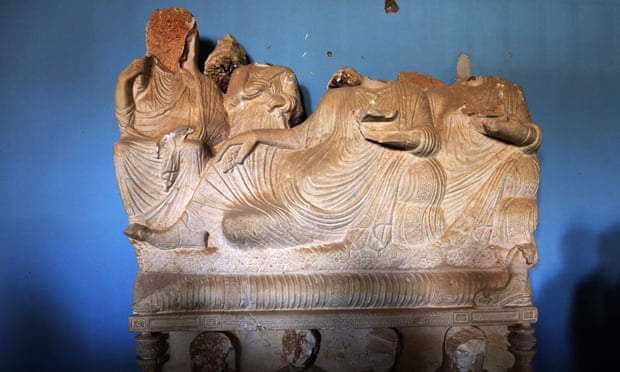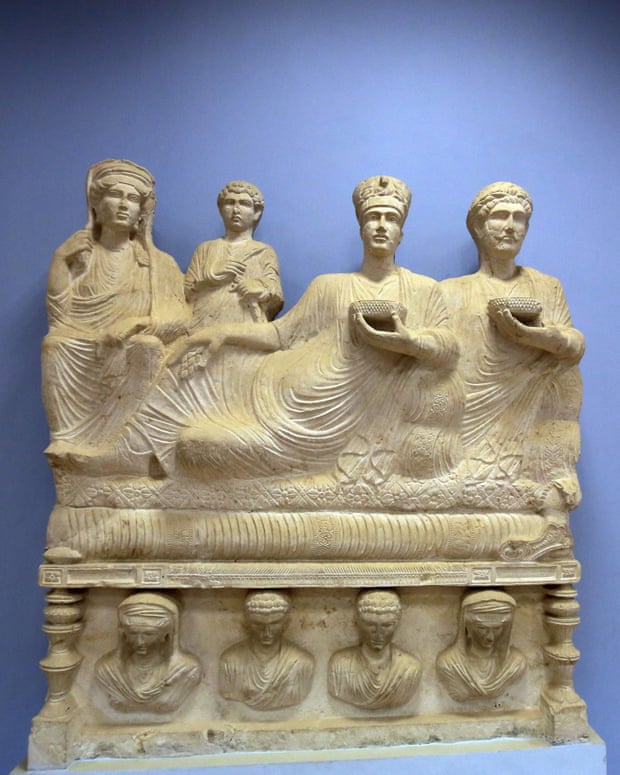By The Guardian
Damage to artefacts in museum worse than feared, with tombs broken open and heads systematically removed from statues.
New pictures have emerged of Islamic State’s destruction of 2,000-year-old antiquities in Palmyra that were liberated from Isis control by Syrian government forces earlier this week.
Although more of the external buildings, including the ancient theatre, survived better than previously feared, the destruction inside the museum appears to have been devastating, with wanton disregard for the archaeological and cultural value of the artefacts. Tombs have been broken open and heads systematically removed from statues.
On the rocks at the entrance to the 2,000 years old Temple of Bel, jihadis wrote in black: “The Islamic State. No entry for civilians or brothers [fighters].” While the temple’s outer walls, main entrance and courtyard have survived, the main cella or prayer chamber has been destroyed. Where the shrine of Baal Shamin once stood, only four columns now remain.
The remains of the Arch of Triumph, dating back to the era of the Roman emperor Severus in the third century, lie on the ground, leaving only the two columns that once sustained the central crown still standing. It is likely to be relatively easy to restore the arch that was repaired previously in the 1930s.
Syria’s antiquities director, Mamoun Abdulkarim, said it will probably take as long as five years to restore the site, and a conference in Paris is likely to be held shortly to discuss the funding of the enterprise. He had claimed at the time of the capture of the desert town by Isis that many of the most important works had been transported to government-held Damascus, and some of the remaining statues were reproductions.
But Abdulkarim also warned “there are still the large items, like the sarcophagi, which weigh three or four tonnes and we could not move. Those are what worry me.” The Roman-Byzantine sarcophagi feature high-relief carvings.
It also emerged that a plan to detonate 4,500 improvised mines that were linked to the telephone network was not carried out because the man responsible for triggering the explosions was killed by Assad loyalists working undercover.
There were also reports that the Syrian army uncovered a mass grave containing more than 25 bodies including women and children. The Syrian president, Bashar al-Assad is trying to use the capture of Palmyra as a propaganda coup, showing he is capable of winning back control of his country from Isis, and western-backed rebel forces.
Khaled al-Assad, the head of antiquities for the ancient city, was killed after he reportedly hid some artefacts and refused to disclose the location to Isis. Some items had already been taken to Damascus, and Russian army experts are now starting to remove the mines from the site, an operation that may take months.


No hay comentarios:
Publicar un comentario